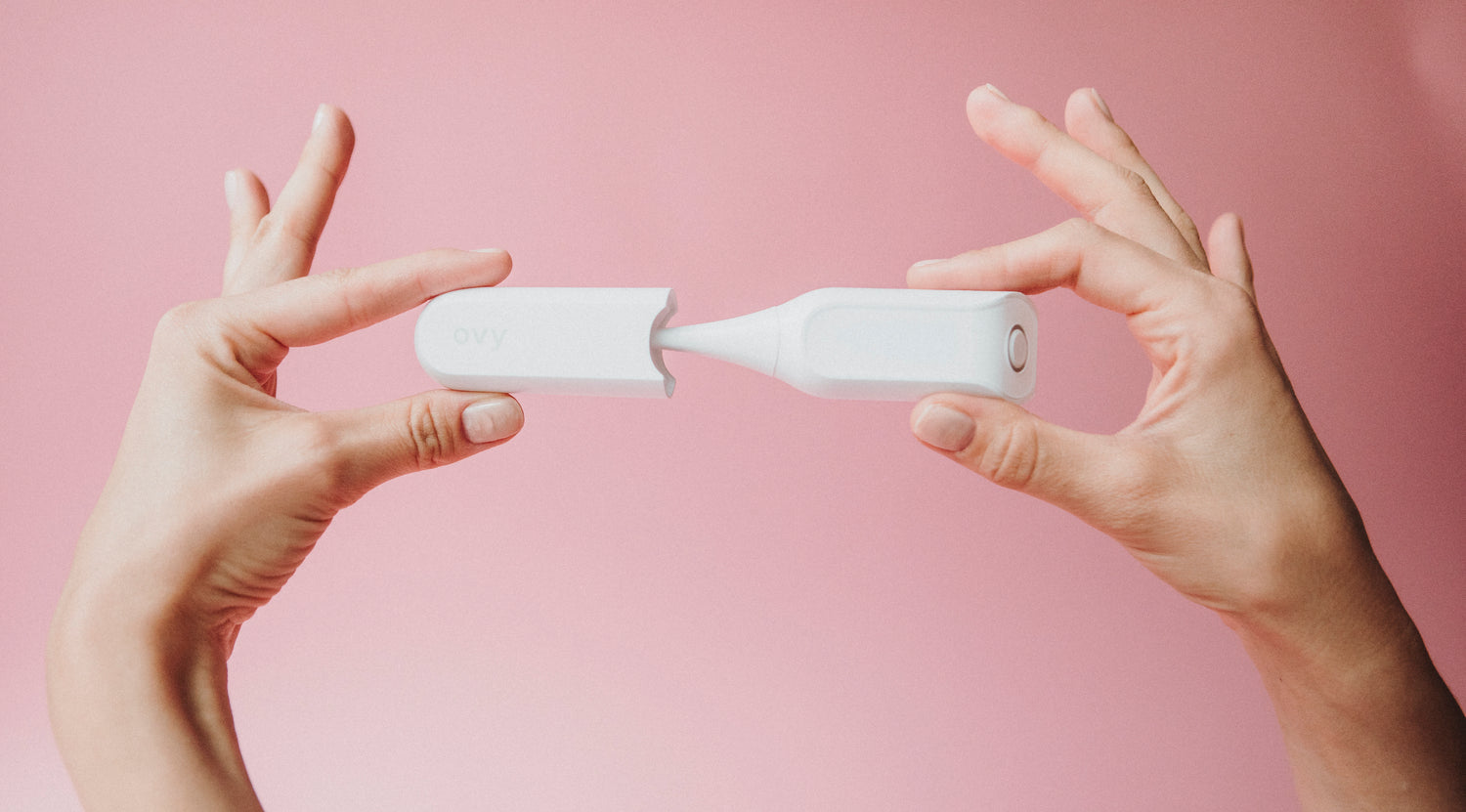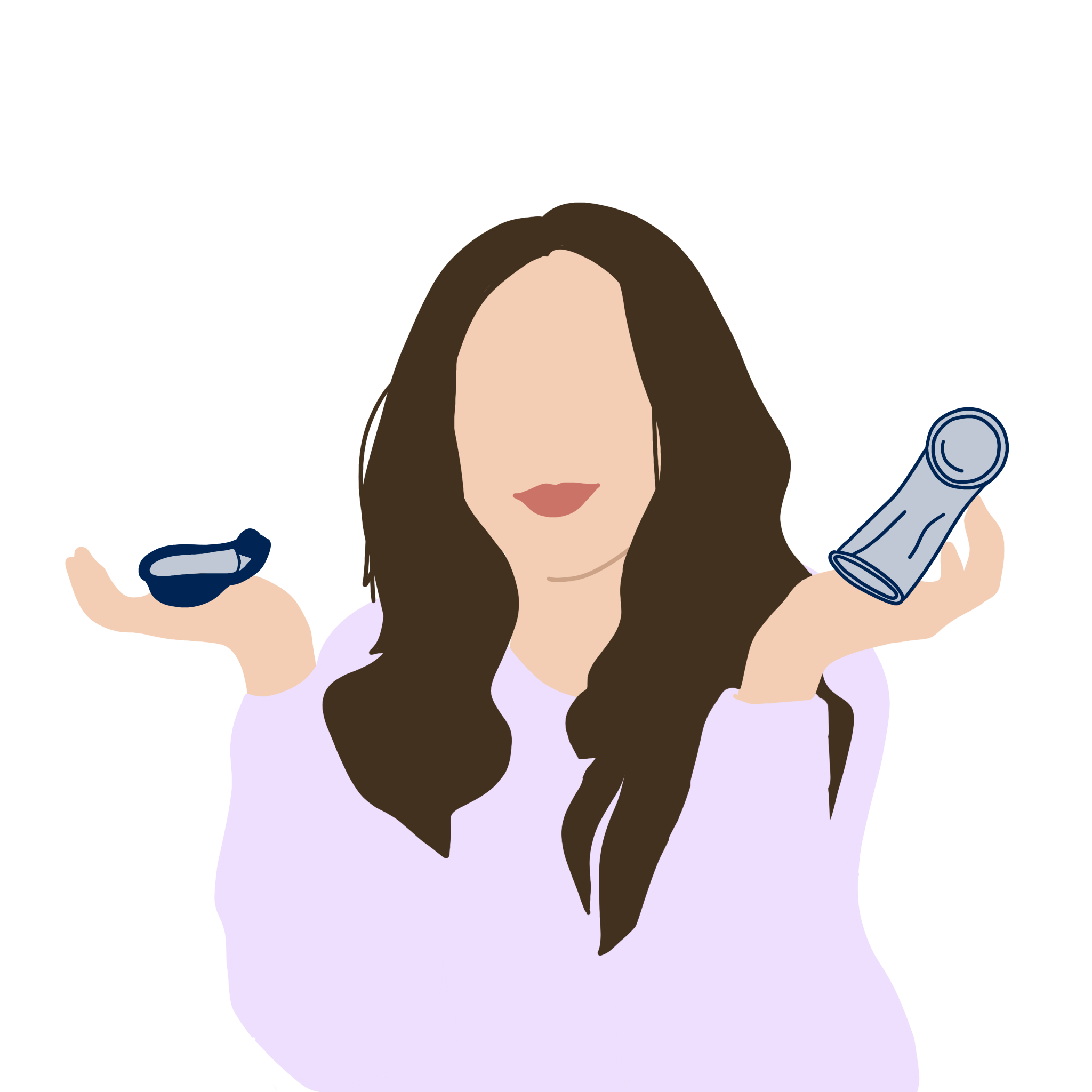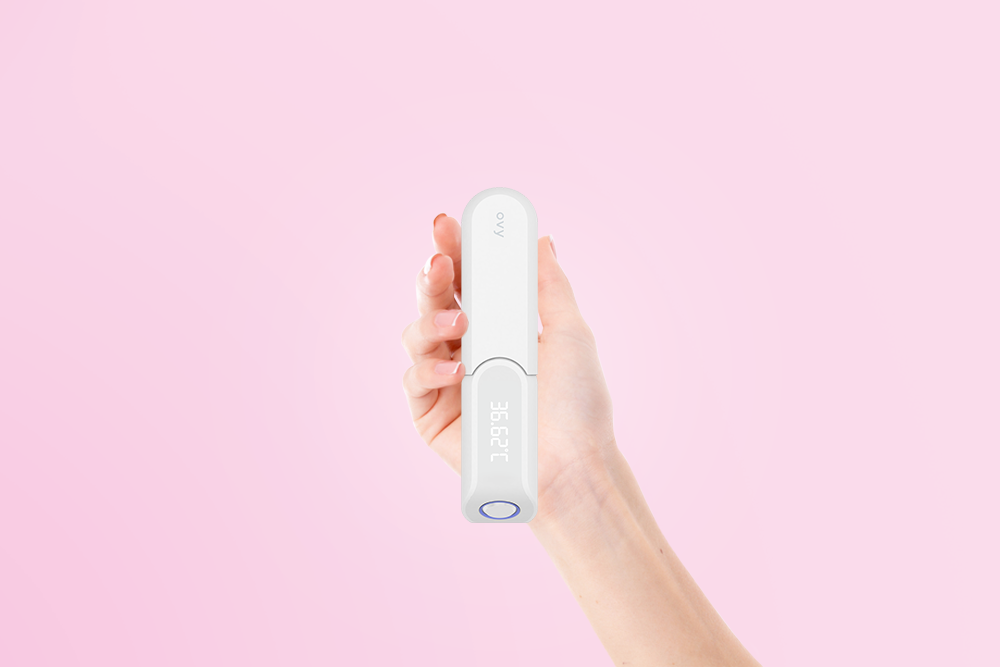Key Takeaways
- Basal body temperature, along with cervical mucus quality, is an important body signal for evaluation using the symptothermal method.
- You measure it in the morning right after you wake up, and before getting up.
- In this article we answer all your questions about measurement location, measurement time, documenting the readings, and temperature interferences.
What exactly does the basal body temperature have to do with the days when you are fertile? How do you measure it and what does “basal” even mean? Here are the answers:
What actually is the basal body temperature?
When the body is resting during sleep, the body temperature drops to its lowest point. It is at its lowest point right after waking up. That is why the basal body temperature is also often called the “waking temperature”. During the day, the core body temperature rises.
How can you measure the basal body temperature?
The basal body temperature is measured using a special digital thermometer. This measures the temperature to two decimal places. The temperature should always be taken from the same part of the body, for example the mouth or vagina. Make a note of the place you take the measurement from and don’t switch until after the completion of a cycle.
When should I measure the basal body temperature?
The basal body temperature must always be measured at the same time every day, in the morning right after waking up, but before getting out of bed. To ensure the measurement is robust, it is important to have at least four hours’ sleep every night. When measuring your temperature every day in the morning, you have a time window of around four hours to do so. That means that you can still have a lie in on the weekend but still obtain robust measurements.
What factors can influence the basal body temperature?
Illness, heavy alcohol consumption, or irregular sleep patterns (for example due to shift work) can influence the temperature. These interference factors have to be documented and, if necessary, factored out of the temperature, so that they don’t distort your calculation. Not everyone’s body reacts in the same way, which is why there aren’t any generally applicable interference factors that inevitably lead to a rise in temperature. Each woman has to decide for herself whether she thinks that the temperature could be distorted.
There is a specific list of interference factors, which you can also find in the Ovy App:
Taking drugs
Unusual alcohol consumption
Short or disturbed sleep
Unusually late bedtime
Night sweats or shivers
Late dinner
Late-night partying
Stress & excitement
Traveling & a change in environment
Clocks changing
Colds or other illnesses
To exclude measurements in the Ovy App, the field “exclude temperature” has to be activated within the basal body temperature screen. Under “Temperature interference”, you can also document which factor may have influenced your temperature. For example, your alcohol consumption on Saturday night was high, and on Sunday morning you measure your basal body temperature. In this case, you should exclude the temperature on Sunday, as the value on this day was influenced. The excluded values will be taken into consideration accordingly by the algorithm. You should document the disruptive factor on the day on which it occurs. It is important to be consistent when documenting interference factors, so as not to falsify your curve.
What does ovulation have to do with the basal body temperature?
The waking temperature of a woman’s body changes as soon as ovulation occurs, conditioned by the hormone progesterone. The body produces the hormone to prepare the uterus for a potential pregnancy. During the first half of the female cycle (from the start of menstruation to ovulation), the temperature is lower than during the second half of the cycle. On the day of ovulation or the day before ovulation, the temperature drops briefly before rising by 0.2 – 0.5 degrees.
How do I recognize ovulation by means of the basal body temperature?
If you measure and record your basal body temperature on a daily basis, you get a temperature curve. By looking at the visible change in temperature, you can narrow down the approximate time of ovulation. The egg cell can be fertilized for around 12 to 24 hours after ovulation. As sperm can survive in the female body for up to five days, women have around five to six fertile days per cycle.
Measuring your temperature, combined with monitoring your cervical mucus or cervix, is how you determine your fertile days. The symptothermal method isn’t robust until after three cycles – the more measurements and the more cycles, the easier it becomes to accurately narrow down the fertility window.
Why should I choose a Bluetooth® ovulation thermometer?
A Bluetooth® ovulation thermometer eliminates the need for manual transfer of the temperature, as the measurement data is transfered to an app via Bluetooth automatically. The Ovy Bluetooth® ovulation thermometer has a standard measurement time of three minutes. At the end of the measurement time, the temperature value is transfered automatically to the Ovy App. A vibration and/or acoustic signal lets you know when the measurement has ended. Both signals can be activated separately.
Why do I have to measure for three minutes?
According to the rules of the symptothermal method, three minutes is the recommended measurement duration. Women with irregular cycles in particular notice that they achieve a more “stable” curve with the 3-minute measured values.
What happens if I have forgotten a measurement?
To calculate the fertile phase, six values before and three days after ovulation are important. As ovulation can also shift forwards, you should start measuring daily from the first day of your cycle, when you still have your period. If you miss a measurement, you should still enter the body signals for that day, and then wait until the next measurement.
If you miss a measurement around the time of ovulation, it may not be possible to identify the fertile phase – or it may delay the ability to make a prediction. If the ovulation has already been identified, and the evaluation for the cycle thus finished, it is not essential to continue measuring.
Why do several measurements taken in a row differ?
Always use the first measured value. It is possible that, in the morning, your temperature increases at different rates the more awake you become, which is why additional measurements will just cause confusion. If you wake up several times during the night or in the morning, measure at the point in time preceded by the longest window of sleep.
What to do if the measured values are below 32 or above 44 degrees?
The Ovy App accepts temperature values between 32.00°C and 43.99°C. If your temperature reading has a value outside of this range, it may be because you didn’t measure for long enough, or potentially have a fever. Try to measure for longer and always for the required three minutes. You could also take the measurement from a different place (oral/vaginal/rectal) and see whether this works better. Important: do not change the place of measurement within a cycle.
References & Literature
- Mihm, M., Gangooly, S., & Muttukrishna, S. (2011). The normal menstrual cycle in women. Animal reproduction science, 124(3-4), 229-236.
- Baker FC, Siboza F, Fuller A. Temperature regulation in women: Effects of the menstrual cycle. Temperature (Austin). 2020;7(3):226-62.
- Steiner, M., Dunn, E., & Born, L. (2003). Hormones and mood: from menarche to menopause and beyond. Journal of affective disorders, 74(1), 67-83.





